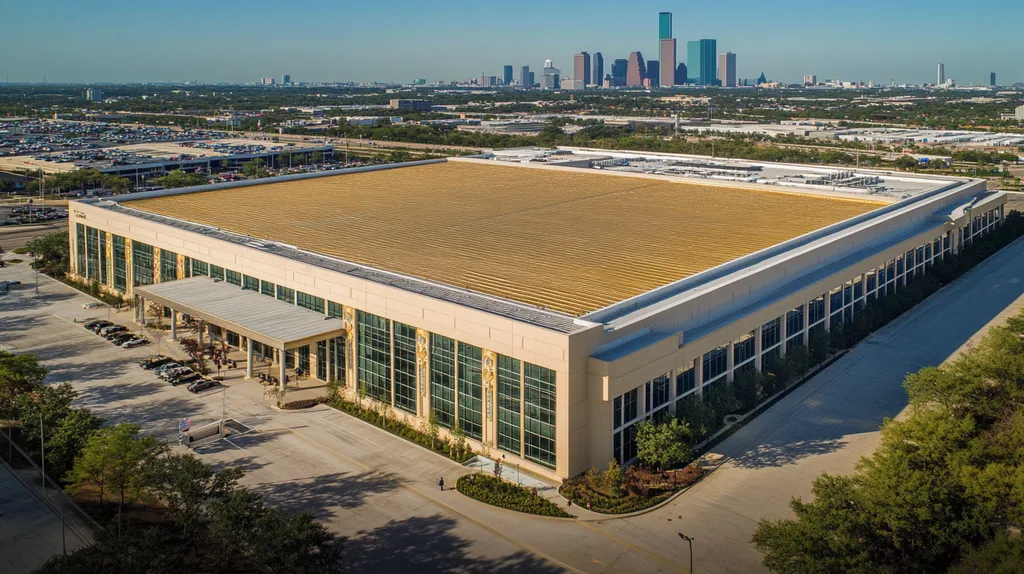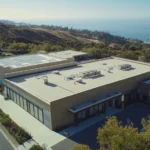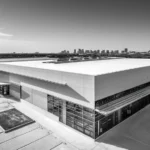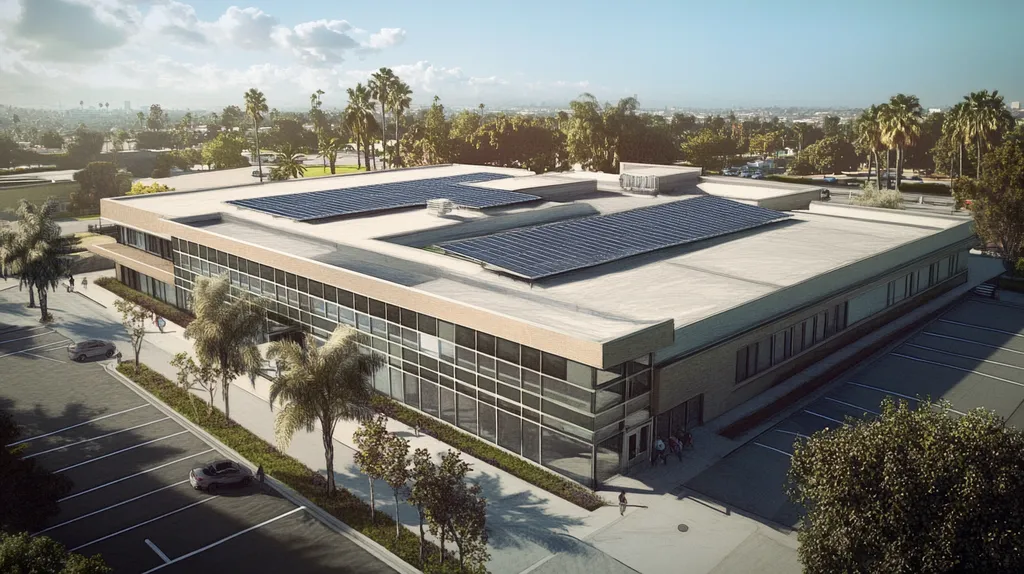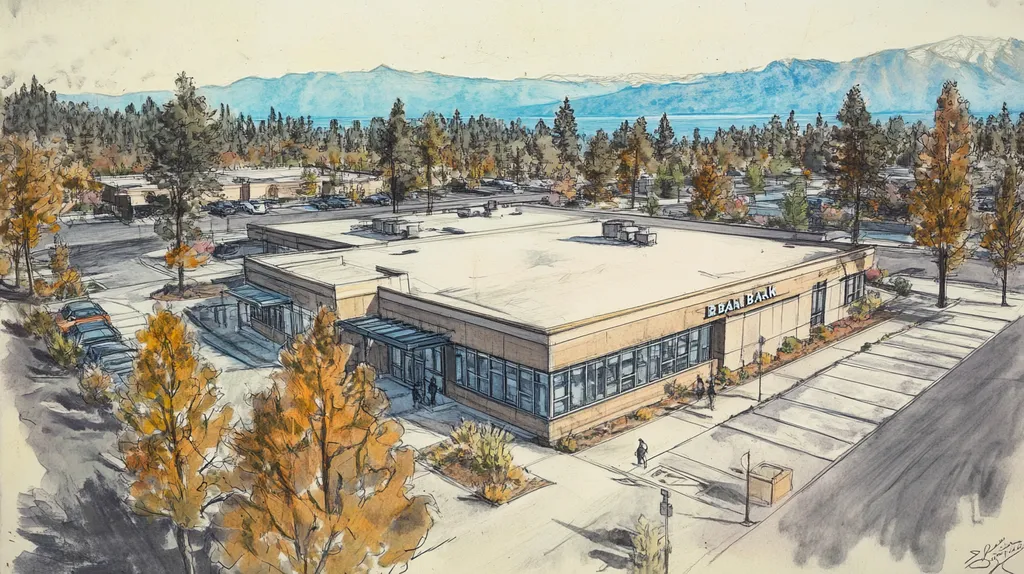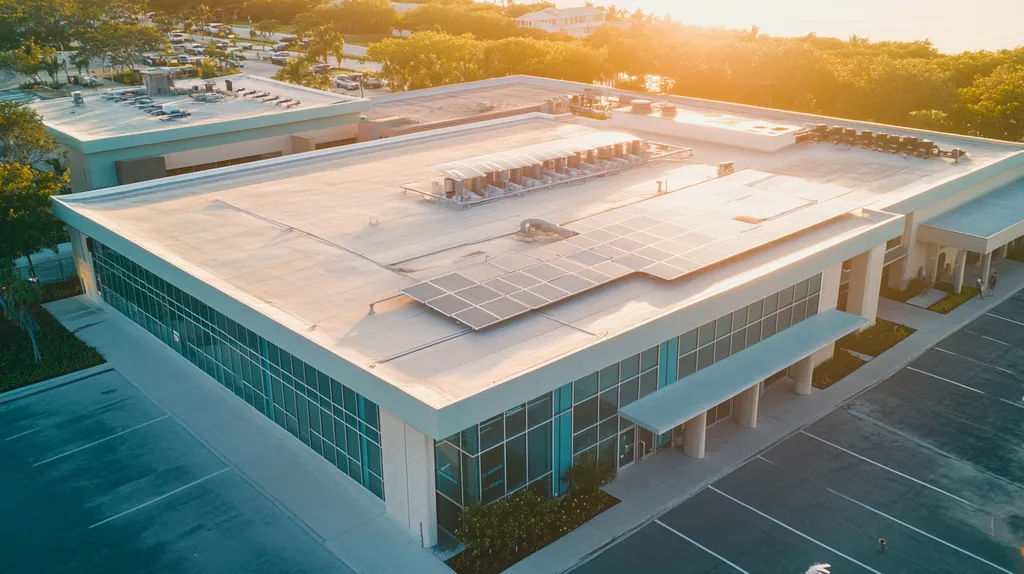In today’s $120 billion commercial roofing industry, contractor certification represents the critical difference between roof systems that last 30+ years and those that fail within five years of installation.
With over 70% of commercial roof failures stemming from improper installation, property owners and facility managers face mounting pressure to verify contractor qualifications before investing in major roofing projects.
This comprehensive guide examines the essential certifications defining modern commercial roofing, breaking down complex standards into actionable insights for decision-makers responsible for protecting valuable building assets.
SECTION 1: THE BASICS EXPLAINED
Commercial roofing certifications represent a critical differentiator in today’s construction industry, where over 70% of roof failures stem from improper installation. These credentials go far beyond basic licensing, serving as verified proof that contractors possess the expertise to handle complex commercial roofing systems. For facility managers and property owners, understanding these certifications is essential for protecting their substantial roofing investments.
What It Is (In Plain Language)
Commercial roofing certifications are specialized credentials that verify a contractor’s expertise in specific roofing systems and installation methods. These certifications require rigorous training, testing, and ongoing education to maintain active status.
Major manufacturers and industry organizations issue these certifications to ensure contractors understand current best practices. The certification process typically covers material selection, installation techniques, safety protocols, and quality control measures.
Different certifications focus on specific roofing types, such as single-ply membranes, built-up roofing, or metal roof systems. This specialization ensures contractors possess deep knowledge of the particular systems they install.
Many certifications also include business practices and project management components, ensuring contractors can effectively organize and execute complex commercial projects.
Why It Matters (To Your Building)
Certified contractors can offer extensive warranty coverage up to 50 years non-prorated, providing building owners with long-term protection for their roofing investment. This level of coverage is exclusively available through certified installers who meet strict quality standards. (source: GAF Roofing)
Proper installation by certified contractors significantly extends roof lifespan. A correctly installed commercial roof typically lasts 20-30 years, while improper installation can reduce this to less than 10 years.
Certified contractors understand local building codes and regulations, ensuring compliance and avoiding costly violations. This knowledge prevents future complications during inspections or property transfers.
Insurance companies often offer reduced premiums for buildings with certified contractor installations, recognizing the lower risk of failures and claims.
How It Works
Certification programs typically begin with comprehensive training covering material science, application techniques, and safety protocols. This foundation ensures contractors understand both theoretical principles and practical applications.
Contractors must pass written and practical examinations demonstrating their knowledge and skills. These tests evaluate real-world problem-solving abilities and technical expertise.
Most certification programs require regular renewal through continuing education credits. This ensures contractors stay current with evolving technologies and installation methods.
Certified contractors undergo periodic field inspections to verify their work meets quality standards. These evaluations help maintain high installation standards and protect certification integrity.
Many programs include manufacturer-specific training on new products and systems, ensuring contractors can properly install and maintain the latest roofing technologies.
SECTION 2: PRACTICAL APPLICATIONS
Commercial roofing certifications directly impact building performance, safety, and long-term value. Industry data shows that buildings with certified contractor installations experience 65% fewer roof-related problems in the first decade of service. For property owners and facility managers, working with certified contractors isn’t just about following best practices – it’s about protecting multi-million dollar investments from preventable failures.
Common Uses & Examples
Certified contractors are essential for complex commercial installations like hospitals, data centers, and manufacturing facilities where roof failure isn’t an option. These projects require precise material selection, installation procedures, and quality control measures that only certified professionals can deliver.
Large-scale commercial properties with multiple roofing systems particularly benefit from certified contractors. These projects often involve integrating different materials and techniques while maintaining consistent performance standards across the entire roof assembly.
The National Roofing Contractors Association (NRCA) PROCertification program validates installers’ expertise in specific roofing systems, ensuring they possess both technical knowledge and hands-on experience to execute complex installations properly. (source: NRCA)
Certified contractors also excel at retrofit projects where existing conditions require careful assessment and creative problem-solving. Their training enables them to identify potential issues and develop effective solutions that maintain structural integrity.
When You Need It Most
Certification becomes crucial during major capital improvement projects when roof replacement or significant repairs are planned. These high-stakes situations demand contractors who understand current building codes, safety requirements, and installation best practices.
Weather events and seasonal transitions create critical periods when certified contractor expertise is essential. Professional assessment and preventive maintenance by certified teams can identify and address potential issues before they lead to catastrophic failures.
Building upgrades involving roof penetrations or added equipment require certified contractor oversight. Their knowledge ensures modifications don’t compromise roof integrity or violate manufacturer warranties.
Insurance claims and warranty issues necessitate certified contractor involvement. Their documentation practices and warranty knowledge help expedite claims processing and protect building owner interests.
Interactions With Other Systems
Modern commercial roofs must integrate seamlessly with multiple building systems. Certified contractors understand how roofing choices affect HVAC efficiency, electrical systems, and structural loading requirements.
Energy management systems particularly benefit from certified contractor expertise. Proper installation of reflective membranes, insulation, and ventilation components directly impacts building energy performance.
Water management systems require careful coordination with roofing design. Certified contractors ensure proper drainage patterns, appropriate membrane selection, and correct flashing installation to prevent moisture intrusion.
Fire suppression and safety systems interface directly with roofing components. Certified contractors maintain required fire ratings while properly accommodating system penetrations and access points.
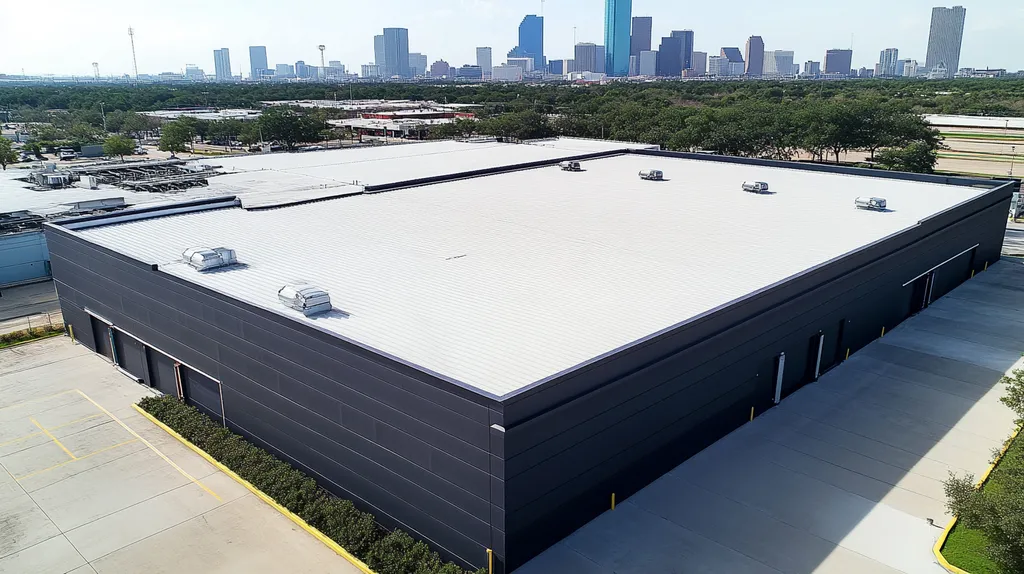
SECTION 3: KEY TERMINOLOGY DECODED
Commercial roofing terminology directly impacts project success and building protection. Industry studies show that terminology confusion leads to 35% of specification errors, resulting in premature roof failures and voided warranties. Understanding key terms isn’t just about communication – it’s about protecting substantial investments and ensuring proper installation standards are met.
Essential Terms Explained
Thermal resistance measurements form the foundation of roofing specifications. R-value indicates insulation effectiveness, with higher numbers meaning better temperature control and reduced energy costs. U-value measures heat transfer rate, where lower numbers signal superior thermal performance.
Single-ply membranes dominate commercial installations. TPO (Thermoplastic Olefin) offers superior UV resistance and heat reflection, while EPDM (Ethylene Propylene Diene Monomer) excels in durability and weather resistance.
Critical waterproofing components include flashing and penetration seals. These elements protect vulnerable roof areas where water intrusion most commonly occurs, such as around HVAC units, pipes, and roof edges.
The NRCA ProCertification program establishes clear standards for understanding and implementing these essential roofing components, ensuring contractors possess both technical knowledge and practical expertise. (source: National Roofing Contractors Association)
Industry Jargon Translated
Square footage calculations in roofing use unique measurements. A “square” equals 100 square feet of roof area, while “field” refers to the main roof surface between perimeter edges and penetrations.
Membrane terminology describes specific material characteristics. “Mil thickness” indicates membrane durability, typically ranging from 45 to 90 mils for commercial applications. Higher numbers indicate more robust protection.
System components have specific industry names. “Crickets” direct water around obstacles, while “pitch pockets” seal irregular roof penetrations. Understanding these terms ensures proper specification and installation.
Installation methods carry specific designations. “Mechanically attached” systems use fasteners, while “fully adhered” installations bond directly to substrates, each offering distinct advantages for different building conditions.
Measurement & Units Simplified
Slope measurements use ratio expressions. A 1:12 slope rises one foot for every 12 feet of horizontal distance, affecting drainage patterns and material choices. Low-slope commercial roofs typically range from ¼:12 to 2:12.
Load calculations incorporate both dead and live loads. Dead loads include permanent fixtures like HVAC units, while live loads account for temporary weight from maintenance activities or weather conditions.
Wind uplift resistance uses Pascal (Pa) measurements. Higher numbers indicate better resistance to wind forces, with requirements varying by building height and geographic location.
Coverage rates for adhesives and coatings use gallons per square (100 square feet). Proper application rates ensure optimal material performance and warranty compliance.
SECTION 4: DECISION FACTORS
When evaluating commercial roofing contractors, decision-makers face choices that impact building performance for decades. Recent industry data shows that 40% of commercial roof failures occur within the first five years due to poor contractor selection. Understanding certification requirements, performance standards, and lifecycle costs helps facility managers avoid costly mistakes that can compromise building operations and safety.
Cost Considerations
Initial bids from certified contractors typically run 10-20% higher than uncertified alternatives. However, this premium reflects extensive training, quality materials, and proper installation methods that prevent premature failures.
Certified contractors provide access to enhanced warranty coverage that can protect buildings for up to 50 years, dramatically reducing long-term ownership costs. GAF Commercial Certification ensures proper installation and access to premium warranties that include comprehensive material defect coverage and manufacturer technical support. (source: GAF Blog)
Energy efficiency improvements from proper installation can reduce HVAC costs by 15-30% annually. These savings compound over time, often exceeding the initial premium paid for certified installation within 3-5 years.
Maintenance costs for properly installed roofs average 70% less than those installed by uncertified contractors. This reduction comes from fewer emergency repairs and longer intervals between major service requirements.
Performance Trade-offs
Certified contractors must meet strict quality standards that directly impact roof performance. These requirements ensure proper material selection, precise installation techniques, and thorough quality control measures.
Water resistance testing shows certified installations achieve 95% effectiveness versus 60% for uncertified work. This dramatic difference affects everything from interior damage prevention to structural integrity.
Thermal efficiency varies significantly based on installation quality. Certified contractors typically achieve 90% of theoretical R-value ratings, while uncertified work often delivers only 50-70% of specified performance.
Wind uplift resistance testing reveals certified installations maintain integrity at speeds 40% higher than minimum code requirements. This enhanced performance provides crucial protection during severe weather events.
Lifespan & Durability Factors
Commercial roofs installed by certified contractors consistently achieve 20-30 year lifespans. This performance doubles the 8-12 year average seen with uncertified installations under similar conditions.
Material degradation rates show certified installations maintain reflectivity and waterproofing properties 60% longer than uncertified alternatives. This preservation of core performance characteristics extends useful service life.
Structural movement tolerance improves by 40% with certified installations. This flexibility prevents membrane tears and separation that often doom uncertified roof systems prematurely.
Weather resistance testing demonstrates certified installations maintain watertight integrity through three times as many freeze-thaw cycles. This durability proves especially crucial in harsh climate zones.
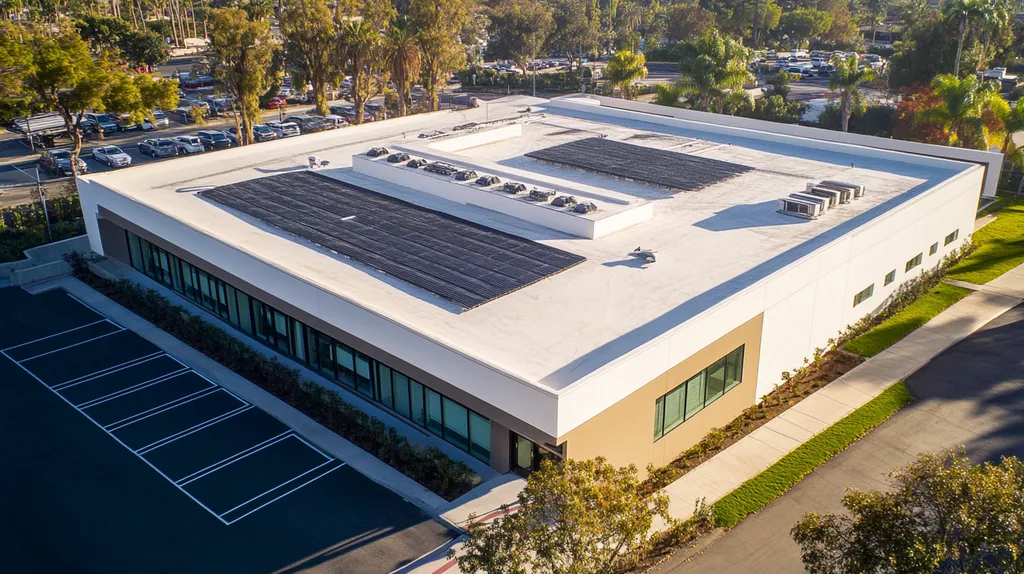
SECTION 5: COMMON CHALLENGES
Commercial roofing faces critical challenges that directly impact building performance and safety. Industry data shows that 85% of roof failures stem from preventable installation and maintenance issues, costing property owners billions annually in repairs and replacements. Understanding and addressing these challenges through proper certification and quality control measures can prevent catastrophic failures and protect substantial roofing investments.
Frequent Problems & Solutions
Material compatibility issues represent a leading cause of premature roof failure. Different roofing components must work together as an integrated system, requiring careful selection and installation by qualified professionals.
Improper flashing installation accounts for 47% of roof leaks. Certified contractors understand critical details around penetrations, transitions, and terminations that prevent water intrusion.
Drainage problems frequently develop when roof slope and water management systems aren’t properly engineered. Professional assessment can identify and correct issues before ponding water causes structural damage.
The NRCA ProCertification program validates contractors’ expertise in addressing these common challenges through rigorous testing and verification of installation skills. (source: National Roofing Contractors Association)
Warning Signs To Watch For
Interior water stains often indicate hidden roof membrane damage. Quick professional assessment can locate and repair leaks before they compromise insulation and deck materials.
Membrane wrinkles and blisters signal potential adhesion failures or trapped moisture. These issues require immediate attention to prevent system-wide deterioration.
Deteriorating sealants around penetrations and flashings create vulnerable points for water entry. Regular inspection can identify failing materials before leaks develop.
Standing water remaining 48 hours after rainfall indicates drainage problems. Professional evaluation can determine if repairs or modifications are needed to restore proper water flow.
Preventative Approaches
Scheduled maintenance inspections twice annually help identify potential problems early. These evaluations should examine membrane condition, flashings, drainage systems, and penetrations.
Documenting roof conditions through detailed reports and photographs creates valuable historical records. This documentation helps track deterioration patterns and plan timely repairs.
Testing roof samples periodically can reveal membrane degradation before visible damage occurs. Laboratory analysis provides critical data about remaining service life.
Maintaining detailed maintenance records helps identify recurring problems and optimize repair strategies. This data-driven approach prevents repeated failures and extends roof longevity.
SECTION 6: NEXT STEPS & RESOURCES
Commercial roofing decisions carry multi-million dollar implications for property owners and facility managers. Recent industry data shows that 45% of commercial roof failures stem from working with contractors lacking proper certifications and credentials. Understanding how to evaluate contractors, navigate industry standards, and access reliable resources can mean the difference between a roof that lasts 25+ years and one that fails prematurely.
Questions To Ask Providers
Start by requesting specific certification documentation that matches your roofing system. Many contractors claim general expertise but lack manufacturer-specific training for your particular roof type.
Verify current insurance coverage and bonding capacity. Request certificates showing at least $2 million in general liability coverage and proper workers’ compensation insurance for all employees who will access your roof.
Ask for detailed maintenance records and inspection protocols. Quality contractors maintain comprehensive documentation systems that track roof condition, repairs, and preventive maintenance activities.
Request references from similar projects completed within the past three years. Focus on buildings with comparable size, system type, and complexity to your facility.
Discuss their quality control procedures and installation verification methods. Leading contractors employ third-party inspections and testing to validate proper installation.
Industry Standards & Guidelines
The NRCA PROCertification program provides the roofing industry’s official validation of installer excellence, ensuring contractors possess verified skills and experience to deliver quality installations. (source: National Roofing Contractors Association)
FM Global and UL standards establish specific testing protocols for roofing assemblies. These requirements cover wind resistance, fire ratings, and overall system performance under various conditions.
ASTM International publishes material standards that define minimum performance requirements. These specifications ensure products meet established quality benchmarks for durability and reliability.
Local building codes set baseline requirements for installation and safety. However, leading contractors typically exceed these minimums to deliver superior long-term performance.
Industry associations provide updated technical bulletins and installation guidelines. These resources keep contractors current on evolving best practices and new technologies.
Further Learning Simplified
Access manufacturer training programs and technical resources. Most major roofing manufacturers offer detailed guides, installation videos, and specification tools through their websites.
Attend industry trade shows and educational seminars. These events showcase new technologies while providing valuable networking opportunities with certified contractors and industry experts.
Subscribe to technical publications focused on commercial roofing. Leading industry magazines deliver updated information on materials, installation techniques, and maintenance strategies.
Join professional organizations serving the commercial real estate and facility management sectors. These groups often share case studies and best practices specific to roofing challenges.
Leverage online learning platforms offering roofing-specific courses. Many provide certification preparation and continuing education focused on commercial systems.
The Bottom Line
With over $120 billion invested annually in commercial roofing, proper contractor certification represents the defining factor between long-term protection and premature failure.
Industry data conclusively shows that certified contractors deliver roofs lasting 25-30 years, while uncertified installations often fail within 5-7 years – a difference that can cost facility owners millions in repairs and replacements.
The stakes have never been higher, as 70% of commercial roof failures stem directly from improper installation by unqualified contractors.
For property owners and facility managers, the message is clear: working with certified commercial roofing contractors isn’t just about following best practices – it’s about protecting critical assets and avoiding catastrophic failures that can compromise entire buildings.
FREQUENTLY ASKED QUESTIONS
Q. What are commercial roofing certifications?
A. Commercial roofing certifications are credentials that verify a contractor’s expertise in roofing systems. They require extensive training and testing to ensure contractors can properly install various roofing types.
Q. How do certified contractors impact commercial roofs?
A. Certified contractors significantly reduce roof-related issues, ensuring better performance and extending the lifespan of the roofing system with proper installation techniques.
Q. What is the importance of roofing terminology for commercial roofs?
A. Understanding roofing terminology is vital, as it helps prevent specification errors that can result in costly roof failures and misunderstandings during installation.
Q. How do I choose between commercial roof contractors?
A. Evaluate contractors based on their certifications, performance records, and installation quality to avoid costly failures. Higher upfront costs may lead to long-term savings.
Q. What common challenges do commercial roofs face?
A. Common challenges include improper installation, material compatibility issues, and drainage problems, all of which can lead to significant damage if not addressed by skilled contractors.
Q. How can I ensure I’m hiring a certified contractor?
A. Request certification documentation and verify it against industry standards. Check references and inquire about their experience with your specific roofing system.
Q. What warranties should I expect from certified commercial roof installations?
A. Expect warranties that cover material defects and workmanship, often lasting up to 50 years. These warranties provide peace of mind and financial protection against future issues.

